








This property is priced to sell at offers over $1,350,000 offering 8.60 hectares of land with 6.536 canopy hectares of vineyard planted on 50% silt to cobble gravel, 50% gravel to sandy loam. The current plantings consist of 3.95 hectares of Sauvignon Blanc, 1.60 hectares of Pinot Noir, 0.65 hectares of Pinot Gris and 0.30 hectares of Chardonnay. Planted in the 1990's the vineyard with a 1.53-hectare portion of the Sauvignon Blanc planted on own roots and the balance on grafted rootstock the block is producing great quality fruit, but tonnages are reflective of the vine age. Suitable for quality table wines the property is offered free of contract. The property has good water supply with shares in the Southern Valley's Irrigation Scheme and its own bore on the Omaka with an A class water right. The current vendor has lodged a consent to renew the water rights and a new right of way to shift the drive to the northern boundary making it possible to replant the east west portion of the vineyard and to re orientate the rows to north south. Redevelopment of this vineyard whether you choose to do it all at once or bit by bit will add value to the property going forward and timing in the market helps make this a viable investment.
The vendor is motivated to sell this property and all offers will be considered.

33 Seymour Street, Blenheim
027 665 5477
mike.poff@bayleys.co.nz
Fairhall McLean
027 346 1671 charlie.mclean@bayleys.co.nz
bayleys.co.nz/4136133


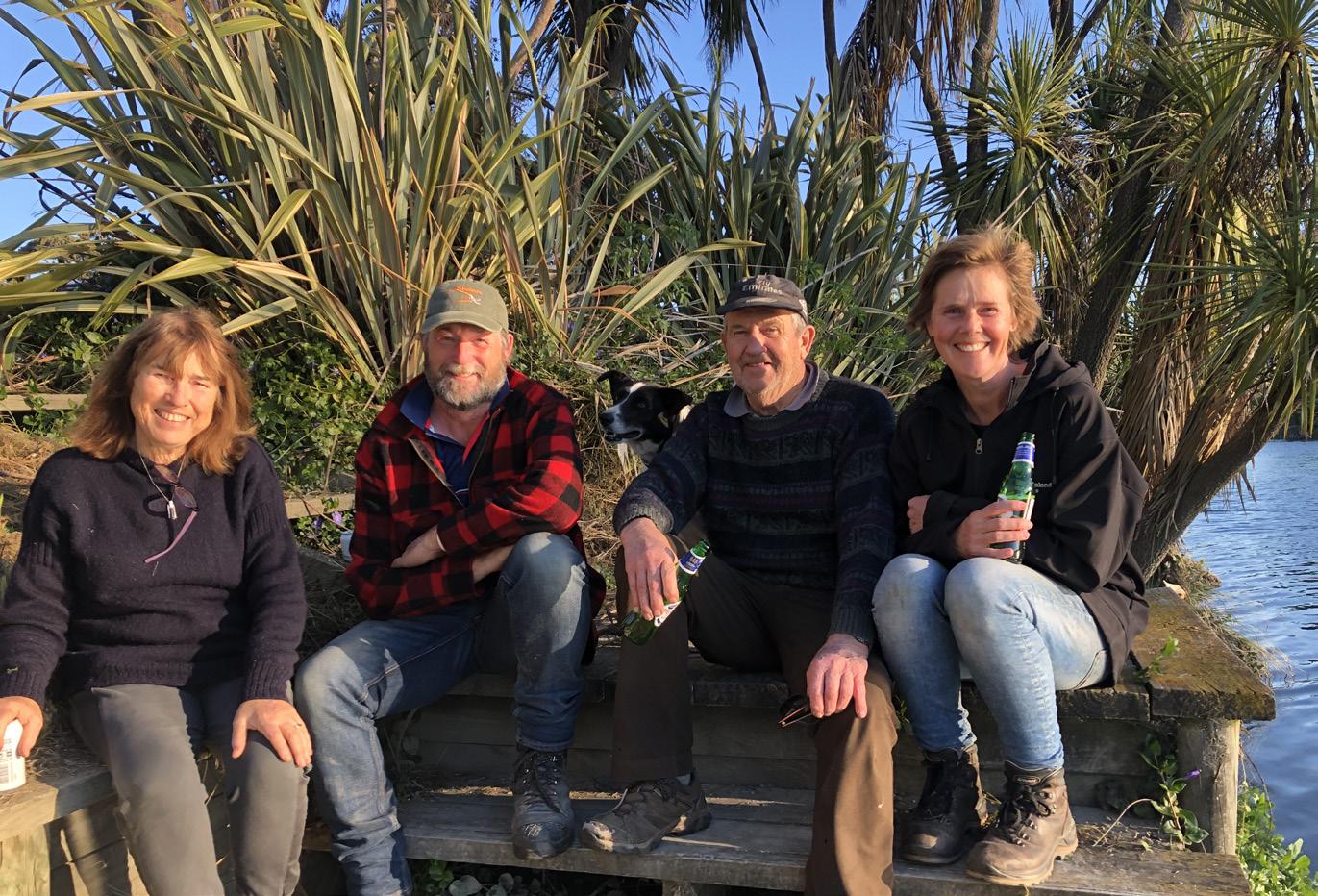

Ten contestants tested themselves and wowed the judges on a frosty Marlborough morning. Top honours went to Anna Kelland from Constellation Brands.

Results are in for the Workforce Survey, with guidance on how to attract and keep good staff.
The Glover family weave together their skills and experience to create a business for the next generation.
After 14 years, Fruition Horticulture is no longer providing the RSE worker training programme.
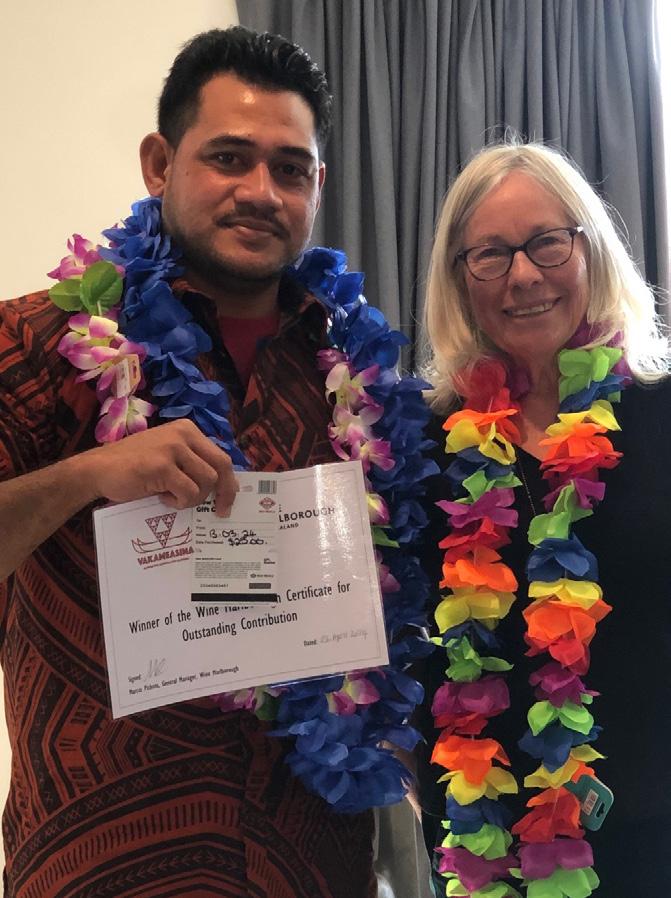

Marlborough pioneered Sauvignon Blanc in the 1980s and many of these original vineyards are now ready for replacement vines.
Now is the perfect time to move to the ECO TRELLIS® system which uses posts, clips and strainers as relevant to site location. Made in New Zealand of high-strength galvanised carbon steel coated with a thick layer of zinc ECO TRELLIS® posts are easy to install and fully recyclable at the end of their vineyard life.
ECO TRELLIS® is the first choice of an increasing number of vineyard managers in New Zealand, Australia and the US.

I’ve been using ECO TRELLIS® posts since 2018. They’re the preferred option for replacement posts in our vineyards. We find they’re safe and easy to use and we can install them by hand without having to use machinery. They are more durable than wooden posts and it’s really important to us that they’re recyclable at the end of their life. An added benefit is the pre-determined holes which mean that the clips are always in the right spot. ECO TRELLIS® is a great product!
Daniel Warman, Vineyard Manager, Constellation Brands
CONTACT US TODAY Gareth Gardiner, Sales Engineer, NZ Tube Mills MOB + 64 21 222 4424 | EMAIL sales@ecotrellis.com

General Manager:
Marcus Pickens 03 577 9299 or 021 831 820 marcus@winemarlborough.nz
Editor:
Bev Doole 021 069 7836 editor@winemarlborough.nz
Marketing and Communications: Sarah Linklater 021 704 733 sarah@winemarlborough.nz
Events Manager: Loren Coffey loren@winemarlborough.nz
Advocacy Manager: Ruth Berry advocacy@winemarlborough.nz
Advertising: Joanna May advertising@winemarlborough.nz
Grape Grower Directors: Andrew Nation nationa@gmail.com
Bryn Cotching breezemere@hotmail.com
Michiel Eradus michiel@eraduswines.co.nz
Nigel Sowman nigel@dogpoint.co.nz
Tracy Johnston tracy@dayvinleigh.co.nz
Wine Company Directors: Beth Forrest beth@forrest.co.nz
Damien Yvon damien@closhenri.com
Drew Ellis drew@mggcoop.co.nz
James Macdonald james@hunters.co.nz
Jamie Marfell Jamie.Marfell@pernod-ricard.com
Designed by: Blenheim Print Ltd 03 578 1322
Disclaimer: The views and articles that are expressed and appear in Winepress are entirely those of contributors and in no way reflect the policy of the Marlborough Winegrowers. Any advice given, implied or suggested should be considered on its merits, and no responsibility can be taken for problems arising from the use of such information.
This document is printed on an environmentally responsible paper, produced using elemental chlorine free (EFC), third party pulp from responsible sources, manufactured under the strict ISO 14001 Environmental Management System and is 100% Recyclable.

EVERYONE LIKES a pat on the back for their work. Those pats can come in many different forms – words of appreciation, a graduation certificate, a pay rise, winning an award, training to improve skills – and there are some great examples in this month’s magazine.
In the run up to the next round of the Marlborough Environment Awards, previous winners don’t mention the prize money or the framed certificate. For a new company like Repost, the value was in having a reason to take stock of what they’re doing and have the fresh eyes of the judges look over their operation, reassure them they’re on the right track, and provide guidance for the future. For an established company like Lawson’s Dry Hills, the award was a much appreciated community endorsement of their sustainability journey that started back in the 1990s.
Entries are open for the Marlborough Wine Show, and along with winning medals and trophies it’s an opportunity for winemakers to bench-mark themselves against their peers, share their knowledge and promote the sub regionality of Marlborough wine. With the quality 2024 harvest the show organisers are expecting fierce competition for the accolades when winners are announced in October.
The Young Viticulturist of the Year competition has been playing out across the country over the winter and is a great way to recognise and encourage those at the start of their career. As shown in our cover story, the Marlborough competitors wowed the judges and impressed each other. As well as testing an impressive range of skills, the competition gives contestants a chance to feel part of the wider industry with opportunities to develop their career further.
The results of the industry workforce survey on page 17 continues the theme. Report author and economist Amanda Reid highlights the need to invest in staff to attract and keep them and it doesn’t have to cost a lot. “Employers often think pay is the only lever they have, but there are other things you can offer, such as recognition or professional development, which make people feel valued, they’re seen, they’re being invested in... we under-estimate that.” Investing in staff to improve their skill levels is a clear signal that they matter, and employees who feel valued will want to stay and do a good job. Everyone’s a winner.
Philip Gregan, CEO for NZ Winegrowers, explains a firm fiscal approach for turbulent times
AS THE industry body for growers and wineries, New Zealand Winegrowers’ (NZW) primary income stream is a levy on the sale of grapes collected under the Commodity Levies Act 1991 and the levy on the sale of wine under the Wine Act 2003. Together the two levies will generate slightly more than $12m in the next 12 months, depending on how much wine is sold in the year ahead and the size of vintage 2025.
Additional income is generated from user pays activities, sponsorships, and government funding for research among others, all of which build on the foundation provided by the levies. As members are all too well aware, our sector is facing turbulent times, whether it be global economic uncertainty, changing regulatory environments, a sales roller coaster, complications from a smaller vintage or climate change. Given these challenging conditions, significant cuts have been made to the NZW expenditure plans for the new financial year – a 19% reduction on the original budget for the past 12 months.
The NZW budget has three key goals for the year ending June 2025:
• First, enable the cost-efficient delivery of our core services and activities for and on behalf of members even in the current tough financial times.
• Second, reduce expenditure. As such, $1.8m has been cut from our forecast expenditure in the year ending 30 June 2025, on top of savings of close to $1m made in the past 12 months. That will mean our budget for expenditure in JYE 2025 is $2.7m – 19% down on our original budget for 2024.
• Third, rebuild NZW reserves so that they are at least $3m at JYE 2025. Below this level NZW experiences major cashflow issues and struggles to manage unexpected reductions in its income (such as from small vintages) or unexpected demands for increased activity (for example if there is a biosecurity incursion).
To rebuild reserves, the Board approved lifting levy rates 8% for JYE2025. This means the wine levy rate for the next 12 months is 3.12 cents per litre of sales while for grapes from vintage 2025 the levy rate will be 0.935% of the farmgate price.

Where is that levy money going?
Our core purpose is ‘Creating enduring member value by enhancing the reputation of New Zealand Wine and the sustainability of our industry’. Services are delivered across our five priority areas: Advocacy, Research (via Bragato Research Institute), Environment, Brand and People. Our Strategic Intent in each of those areas is:
• Advocacy: A trusted voice advocating for a supportive operating environment
• Research: Driving science and knowledge for innovation in viticulture and winemaking
• Environment: Demonstrating our commitment to a sustainable future
• Brand: Building and promoting a premium New Zealand Wine Brand
• People: Supporting industry to attract, develop and retain skills and talent
Within that framework we need to ensure we meet the needs of growers and wineries. These are reflected in our biannual Members Survey from which we published insights in December last year. Top of the wants from members were a continued focus on building New Zealand’s international reputation and providing resources to support market access, along with continued advocacy to keep compliance costs in check. Despite the expenditure cuts, NZW is looking forward to a very busy year. We are planning for a range of member webinars across a wide variety of topics and issues, and we are looking forward to the upcoming Wine Business Forum, Altogether Unique Celebration Dinner, Women in Wine Breakfast and the Research & Innovation Forum being held in Wellington at the end of August. Pinot Noir NZ 2025 in February sees the return of this internationally focused event after an eightyear hiatus. The NZW Board election is on the horizon, so watch out for details in coming weeks on the election timetable, how to nominate candidates and the dates for voting. As always if members have any matters which you think we need to be aware of please contact me or any other member of the NZW team.
Karen Mckeown manages Wellbeing at Hunter’s Wines and led the team to win an award in this year’s Marlborough Wine Wellness Week
You came to Hunter’s from Constellation. What’s the difference running a wellbeing programme at a smaller company?
There are several advantages to being smaller. We can focus on the specific needs of staff and tailor the programme to suit. This leads to higher engagement and better overall well-being. The smaller scale enables regular gatherings, fostering closer relationships and a strong sense of community. Often it’s the simple things that make a big difference and don’t necessarily cost a lot of money. Spreading wellness messages and promoting resources can have a significant impact. If providing information encourages even one person to see their GP, get a skin check, or take time for their mental health, then the effort is worthwhile. We use Slack.com as our communication platform, which everyone is on board with. We have a dedicated Health and Safety and Wellness page on Slack for messages on these topics, as well as a good old-fashioned noticeboard, ensuring no one misses out. What makes good leadership when it comes to wellness at work?
Wellness has always been important to me personally –eating well, exercising, and taking time out. I guess I like to lead by example but recognise that we all have areas we can improve on and at times a bit of knowledge and

encouragement can help inspire and ignite new goals. I’m extremely passionate about wellness at Hunter’s, and that everything I do is authentic and done with integrity. I encourage input and participation and like to express my thanks to those who take part. Hunter’s has been very supportive and encouraged me in all areas of wellness, enabling me to develop the role and myself into a wellness leader.
How do you keep up the momentum with the team? All activities need to have an element of fun and be relevant. This ensures that everyone enjoys participating and feels engaged with the wellness program. I like to plan ahead and do a lot of research to try and come up with different ideas. A good mix of give and take is important too. It’s not just about what your employer can do for you but what you can do for each other and give back to your community.



Table 1: Blenheim Weather Data – July 2024
1 Growing Degree Days (GDD): Max/Min are calculated from absolute daily maximum and minimum temperatures 2GDD: Mean are calculated from average hourly temperatures 3GDD LTA = 1996/97-2023/24
July 2024 recorded 41.2 mm rain, 61% of the long-term average (LTA) for July of 67.6 mm. This is in marked contrast to July 2021 and July 2022 rainfall total of 143.6 mm and 220.6 mm respectively. July 2022 was the highest ever monthly
Table 2: Weekly weather data recorded in Blenheim during July 2024
rainfall for Blenheim. Total rainfall for January to July 2024 was 250.0 mm was 67% of the LTA. There were 6 rain days in July. A rain day is a day with greater than or equal to 1.0 mm (LTA is 7.3).
July’s mean temperature of 8.8°C was 0.7°C above the LTA. This is 10th warmest July on record, for the 93 years 1932 to 2024, with 8 of these years being between 2000 and 2024. July continues its run of above average mean temperatures. The last time that July recorded a below average mean temperature was in 2015 (7.5°C). The average daily maximum temperature of 14.5°C, which was 1.3°C above average. July’s absolute maximum temperature was 18.9°C on 27 July. This is 7th warmest July maximum from 1947-2024.
July recorded 11 ground frosts and 3 air frosts. The coldest ground frost of -3.5°C was recorded on 4 July, with the previous day and the following 3 days all recording ground frosts. The coldest air frost of -0.7°C was recorded on 4 July. 12 July was the coldest day of the month with a mean temperature of 5.7°C.
The overall trend for the number of frosts in July is declining. The trend line in Figure 1 indicates that the number of ground frosts recorded in Blenheim during July has dropped
The overall trend for the number of frosts in July is declining. The trend line in Figure the number of ground frosts recorded in Blenheim during July has dropped from 22 2024. The 10-year mean (1937 to 2019) calculates the 5 years prior and the 5 years Although the 10-year means fluctuate up and down, the main trajectory of the line is also trajectory with a mean of 8.35 fewer frosts in 2019 compared with 1937.
from 22 in 1932 to 12.5 in 2024. The 10-year mean (1937 to 2019) calculates the 5 years prior and the 5 years after each year. Although the 10-year means fluctuate up and down, the main trajectory of the line is also in a downwards trajectory with a mean of 8.35 fewer frosts in 2019 compared with 1937.

Figure 1: Blenheim’s ground frosts in July for the 93-years 1932 to 2024
Figure 1: Blenheim’s ground frosts in July for the 93-years 1932 to 2024
Soil Temperatures
Soil Temperatures
With a lower number of ground frosts during July the shallower soil temperatures at 10, 20, 30 cm depth were all warmer than their LTAs.
Sunshine
With a lower number of ground frosts during July the shallower soil temperatures at 10, were all warmer than their LTAs.
Blenheim recorded 165.7 hours sunshine for July, which was 102% of July’s LTA. July 2023 was 5th sunniest July on record for Blenheim, for the 95 years 1930 to 2024. Total sunshine in Blenheim for January to July 2024 was 1543.3 hours; which was 110% of the LTA and was the third sunniest location in New Zealand.
Sunshine
Soil Moisture
Blenheim recorded 165.7 hours sunshine for July, which was 102% of July’s LTA. July sunniest July on record for Blenheim, for the 95 years 1930 to 2024. Total sunshine in January to July 2024 was 1543.3 hours; which was 110% of the LTA and was the location in New Zealand.
The average shallow soil moisture (0 to 35 cm depth) at the Grovetown Park weather station for July was 36.5%, slightly below field capacity of approximately 38%. Total June and July rainfall was 110.2 mm, 83% of the LTA of 132.4 mm. Dryland pastoral farmers rely on good rainfall in the late autumn, winter and early spring, to recharge soil moisture and to ensure good spring pasture growth. Evenly spread and above average rainfall in August would undoubtedly be welcomed by the farming community, so long as we don’t receive any large damaging rain events.
Wind-run
Soil Moisture
Average daily wind-run during July 2024 was 158.5 km, 71% of the LTA daily wind-run for July (224 km). This was the lowest average monthly wind-run so far in 2024. All the days in July recorded below average daily wind-run. 17 July was the stillest day with just 91 km of wind.
Four blocks of Sauvignon blanc in different sub-regions in Marlborough have been continuously monitored for the past 20 seasons by Plant and Food Research. They are part of the Regional Phenology Programme funded by New Zealand Winegrowers. Table 4 describes the dates of 50% budburst at each of the blocks from 2016 to 2023.
The average date of 50% budburst over 20 years was between 2 and 7 October at the respective blocks. The average date of 50% budburst from 2004 to 2013 was later than the period 2014 to 2023 by 2 to 5 days, with the exception of Western
The average shallow soil moisture (0 to 35 cm depth) at the Grovetown Park weather was 36.5%, slightly below field capacity of approximately 38%. Total June and July mm, 83% of the LTA of 132.4 mm. Dryland pastoral farmers rely on good rainfall in winter and early spring, to recharge soil moisture and to ensure good spring pasture spread and above average rainfall in August would undoubtedly be welcomed community, so long as we don’t receive any large damaging rain events.
Wind-run
Wairau. This indicates that budburst is getting earlier. In the Seasonal Climate Outlook for the 3-months August to October 2024 NIWA has predicted that Marlborough’s temperatures could be 50% chance of above average, 45%
chance of average and 5% chance of below average. With that in mind it is probable that Marlborough will again experience an earlier than average budburst date in 2024.
Table 4: Date of 50% budburst of Sauvignon blanc in four Marlborough sub-regional blocks across 8 years
Victoria Raw - Plant & Food Research Funded by the Marlborough Research Centre


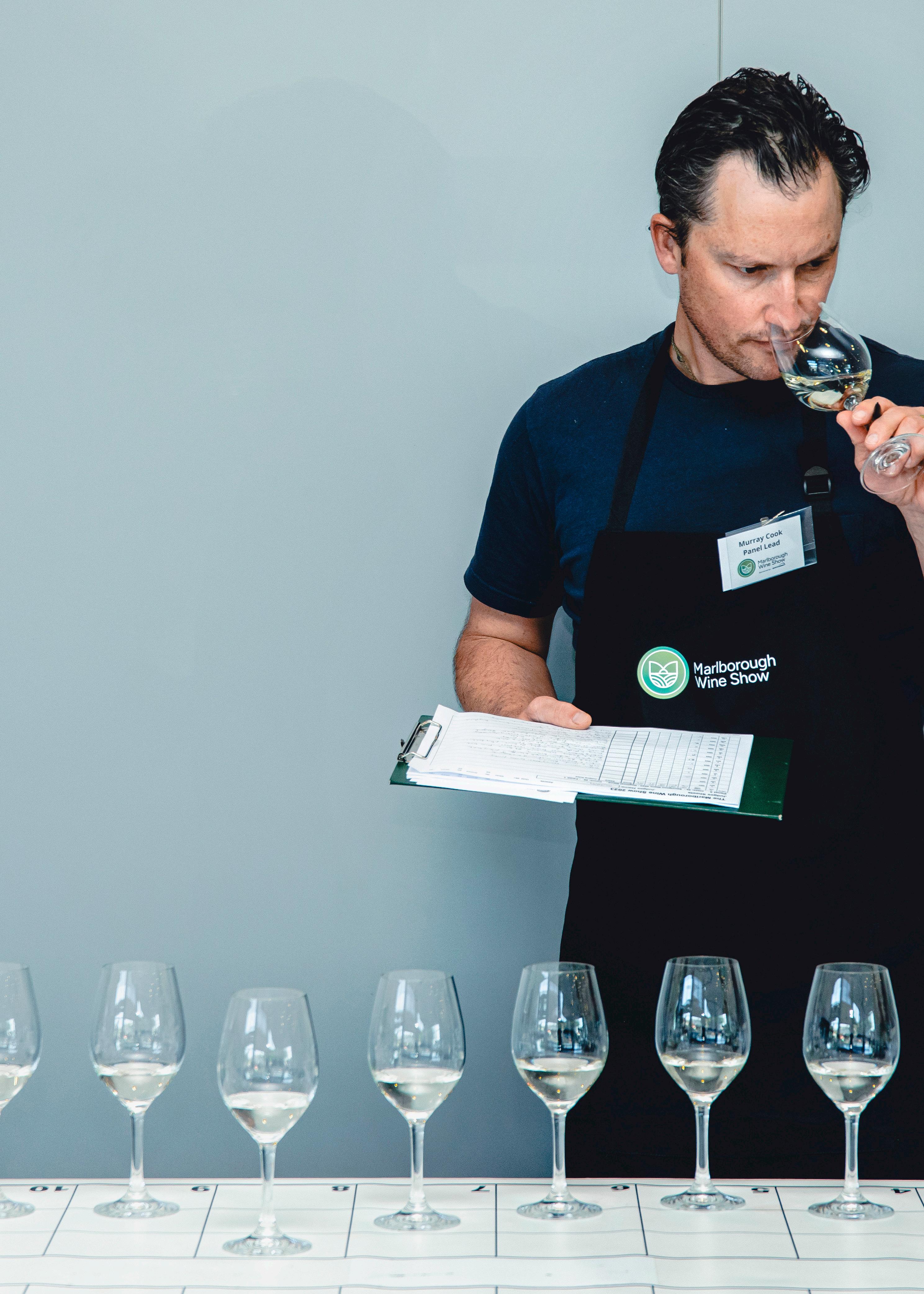

Showcasing excellence, provenance and diversity of Marlborough Wines.
This year’s top Young Viticulturist shares her passion for knowledge
FOR THE first time in 19 years, three women took out the podium spots at the Marlborough 2024 Young Viticulturist of the Year Competition. Anna Kelland from Constellation Brands won the overall competition, Liv Bishop from Delegat was runner up and Laura Hammond from Babich Wines came third.
The Ormond Nurseries Professional Reputation Award went to Dan Du from Whitehaven. The contestants were among 10 of the region’s brightest up-and-coming viticulturists who went head-to-head in the annual competition, held at Whitehaven Wines on a very frosty morning last month.
Their expertise and knowledge were put to the test in a series of challenges and theory papers on skills including trellising, pruning, irrigation, machinery, pests and diseases and budgeting. In the evening, contestants delivered speeches at the Awards Dinner, followed by a quick-fire quiz before the final scores were tallied up and winners announced. First-time entrant 22-year-old Anna Kelland was completely taken by surprise to hear her name called out as winner. “It was absolutely incredible, especially as two other women were on the podium already,” Anna says. “To have three women take the top spots is really encouraging – only two women have won the Marlborough competition in the 19 years it’s been running.”
A self-confessed academic, Anna grew up in Napier where she attended Taradale High School and graduated a year early as Dux. She was only 17 when she embarked on double bachelor’s degrees in viticulture and wine science at the Eastern Institute of Technology. “I was too young to even drink wine when I first started studying, but I’ve always enjoyed learning and studying, so I was happy to focus on the theory for the first six months.”

“I was too young to even drink wine when I started studying viticulture.” Anna Kelland
been working full-time as a viticulture technician for Constellation in Marlborough since June last year.
Anna’s broad range of skills stood her in good stead for the Young Viticulturist competition and Tahryn Mason, judge of the pruning section, was impressed with her intelligent approach.
“It’s always surprising when a first-time contestant takes it out, particularly when you have repeat contestants involved,” Tahryn says. “But it was very clear that Anna knew her stuff, very intelligent, very quick, particularly with her answers in the theory section. She was very intuitive, not a lot of second guessing, it was a really strong performance from the outset.”
During her studies Anna worked part-time in a range of roles, starting out as a vineyard operator in Hastings after receiving a three-month internship through Constellation Brands. For vintage 2021 she worked as a cellar hand with Villa Maria, then as laboratory technician for Constellation in vintage 2023, while getting some cellar door experience at Pernod Ricard Winemakers in the same year. She has
Anna will represent the region at the national final at Escarpment Vineyards in Martinborough later this month. While study might be second nature, she says she wants to brush up on her tractor skills before then. Colleagues, mentors and grower partners at Constellation Brands have been hugely supportive in helping her prepare for the competition, she says. “There are some nerves, but mostly excitement. I’m going to go in with the same attitude of having fun and learning heaps.”
Tahryn Mason has been on both sides of the contest and sees benefits all round
BEV DOOLE
IN 2022 Tahryn Mason took out the Marlborough and then the National Young Viticulturist of the Year title. Now he’s back as one of the Marlborough judges and he’s in awe of the high standard of the contestants. “It’s only two years since I won but I’d be cautious about competing against some of these new ones. The calibre of the contestants was really high this year - I’m really impressed at what they know and what they can do at such a young age.”
“Just competing gets your name and face out into the industry.”

Tahryn Mason
Tahryn, who is Viticulture Operations Manager at Berakah Vineyard Management, wrote and judged the pruning section of the competition, which is a mix of theory and practical. “The theory includes diseases around pruning, the physiological aspect and the effect that pruning has on the vine.” For the practical test three different vines are pruned in three different styles, including two-cane long spur pruning for Sauvignon Blanc.
“Long spur is obviously something that has been around for a while but it’s come to the fore since Covid. The research suggests it’s a style of pruning that’s well suited to the way Sauvignon likes to grow, and it also has labour cost advantages. We try to make the competition topical. As young vits they should be abreast of new developments and
how that affects the choices we’re making in the vineyard.”
Learning, making connections and building confidence are all benefits from competing. But most importantly, says Tahryn, is getting exposed to a lot of people working in different parts of the wine industry and starting to form ideas about what your own career path might look like.
“I cannot overstate how competing in the competiton has massively helped my career. Just competing, let alone placing or winning, gets your name and face out into the industry. It’s a great way to build connections early on in your career that are long-standing.” Two years on from winning and Tahryn is still getting job offers. As for the current crop of Young Vits, he says if this level of competition continues the industry is in safe hands.
The contestants, from left at back: Liv Bishop, Delegat; Eric Bryan, Indevin; Andre Dippenaar, Constellation; Anna Kelland, Constellation; Lizzie McMullen, Seresin; Dan Du, Whitehaven; Harry Watson, Spy Valley; Nav Sandhu, Little Oasis. At front: Laura Hammond, Babich and Harrison Chou, Pernod Ricard



Penny Wardle

AN ALTERNATIVE pruning method could cut costs of growing Sauvignon Blanc without compromising wine quality, early trial results suggest. At Grape Days 2024 in Blenheim, a poster presentation by Nelson Marlborough Institute of Technology student, Tracy Gilmore, set the scene. Vineyard labour costs were up 236% since 2013 and cane pruning was the most expensive activity, contributing 22% of operating costs.
Yuichi Ando, field trial coordinator for Bragato Research Institute, told Grape Days delegates that “labour shortage concerns became a serious crisis, under 2020 Covid restrictions”. Long spur pruning could ease these worries, “reducing labour while maintaining yield and quality”.
The viticulture research technician shared results of the fourth and final year of a long spur pruning trial. The Marlborough norm of cane pruning Sauvignon to four canes is compared with long spur pruning to four and five buds.
Yuichi said long spur pruning could save 80c to $1.40 per vine, depending on whether it was done mechanically or by hand. However, these savings may not be expected in the year one conversion as it may require extra cost to set up properly. The latest cost-benefit analysis – based on tonnes harvested in three trial sites, gross profit, and pruning savings – put long spur pruning mostly ahead on two vineyards. But on the third, profitability lagged at both four and five buds.
“To be successful with long spur pruning, initial setup is a key,” Yuichi advised, and the conversion may take over two years. In year one, canes on the bottom wire must be strongly attached to the trunk, and loosely wrapped to allow sap flow. Even spur spacing maximises light to the basal buds which improves fruiting the next season. And filling the gap between the cane ends maximises the space for spur selection and fruiting. Growers say these steps will increase the longevity of cordon life and reduce maintenance costs in future. Juice, acidity, sweetness and aroma were not significantly different in wines made from cane versus long spur pruned vines, Yuichi said.
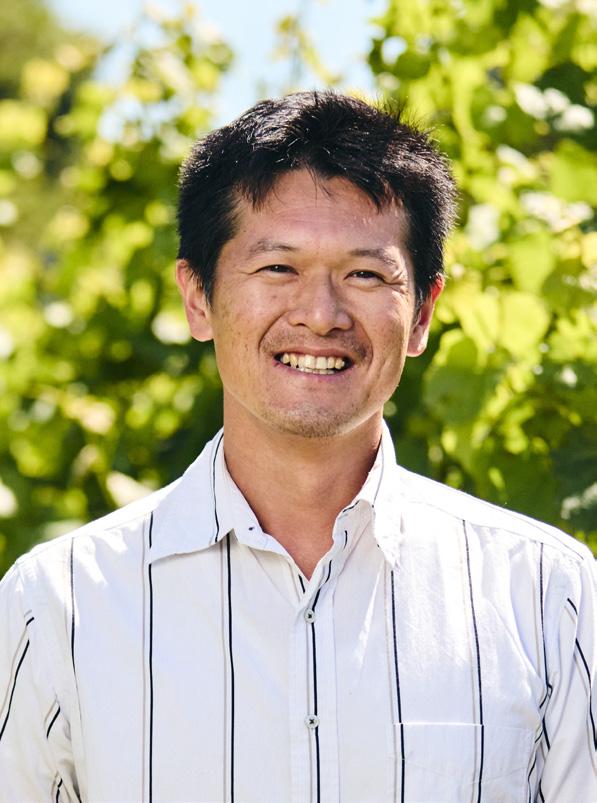
“Long spur pruning could reduce labour while maintaining yield and quality.”
Yuichi Ando
whether long spur pruning protected against Grape Vine Disease (GVD), he quoted the advice of Dion Mundy, Plant & Food Research Senior Scientist, that the method reduced the risk of primary infection compared with cane pruning. Symptoms generally showed up earlier, giving time to remove affected cordons before pathogens reached the trunk. And fewer cuts around the vine head protected against infection.
In Marlborough vineyards, long spur pruning is also filling gaps where GVD has killed vines and as a method to tackle overvigorous vines. Ian Buunk of Woodbourne Farm, Fairhall, long-spur prunes to two to five buds, to stretch across gaps where vines died of GVD. “It’s delaying the inevitable plus we can barrel-prune to reduce labour so it’s cheaper,” Ian says. The vineyard was planted in the early 1990s so vines were 2.5 metres apart, compared with today’s 1.8 metre standard.
Matt Gallop, Constellation vineyard manager, said long spur pruning was employed at a “hugely vigorous” site at Tua Marina where buds were so far apart it was a struggle to get lateral length short enough. “We have no labour shortage, this is simply to control vines so vigorous that fruit drops due to lack of light.” This winter would be the third of a regime of year-on year-off spur and cane pruning, Matt said.
More information on the long spur pruning research: bri.co.nz/long-spur-pruning.


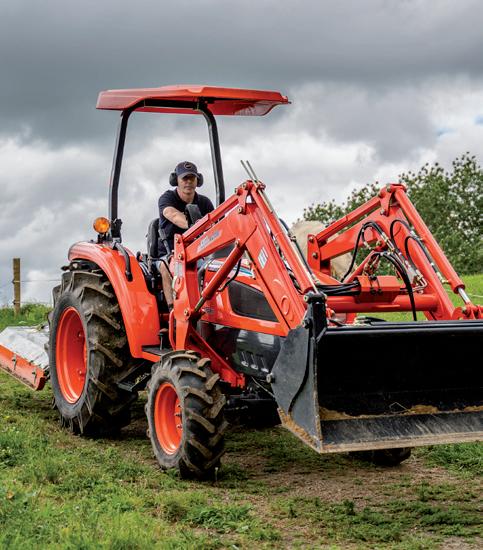
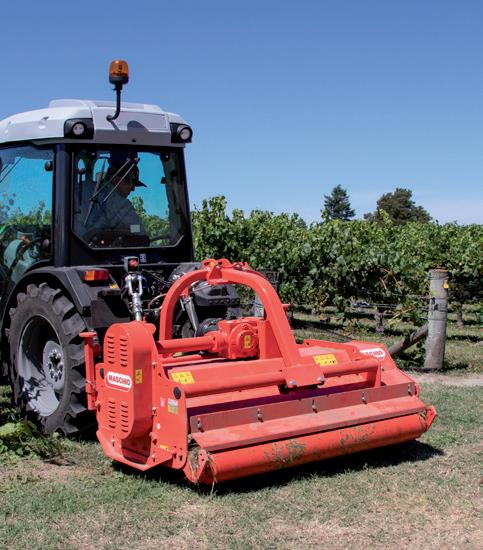
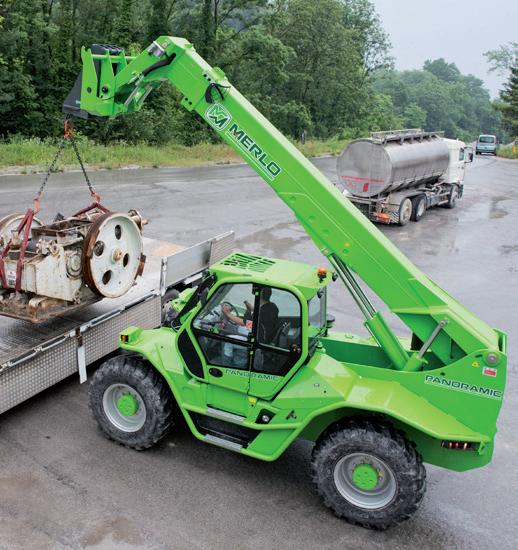

Visit us at our purpose built building at the Riverlands Truckstop, 3535 State Highway 1, just out of Blenheim.
Our experienced team now have a state-ofthe-art workshop to ensure your gear is always ready to work hard for you when you need it. Does that Silvan Sprayer need a service? We do sprayers, to tractors, right through to construction equipment. Give us a call or drop in, we service most makes and models and can have most parts for you in under 48 hours. Make sure your equipment is ready to work as hard as you do.





CATHIE BELL
EMPLOYERS WHO routinely invest in their machinery, maintaining it and making sure it’s fit for purpose need to do the same for their employees, a workforce economist says. Amanda Reid from Business and Economic Research Limited (BERL) was commissioned by Wine Marlborough, in partnership with New Zealand Winegrowers and the Ministry of Business, Innovation & Employment, to assist with gathering data on current and future workforce needs. She spoke at the WinePRO conference in Blenheim and highlighted the need for wine businesses to work together on labour workforce issues.
New Zealand is a nation of small businesses, Amanda says, and often employees are considered a cost. She says people get “protectionist” worrying about staff being poached, rather than thinking about what would keep staff with them. Small companies might feel they can’t offer career parthways, but that was a “limited” way to think about it. Careers can be lateral and different skills can be bridges to other careers. “Employers often think pay is the only lever they have, but that is not necessarily so. There are other things you can offer, such as recognition or professional development, which make people feel valued, they’re seen, they’re being invested in... We under-estimate that.” Being prepared to invest in staff to improve skill levels is a “really clear signal” to employees that they matter, she says. Generational change is also significant. Amanda says the younger generation wants to work for a business that shares their values. “They’ve been raised in a social system where they get participation certificates, it’s an indication of a system that’s about recognition and validation. They want that. They won’t complain, they will just leave. Or they won’t apply for jobs because there is not a match for them.”
The BERL report defines the roles and skills that make up the wine industry (from vineyard to market) to improve the ability to identify gaps and career pathways, and to forecast future workforce needs across roles and business types. BERL surveyed wine businesses and job advertisements were analysed and jobs were clustered according to skill sets. Valuing and developing skills and competencies that can be transferred through different roles and responsibilities is key to facing workforce shortages

“There are other things you can offer, such as recognition or professional development.”
Amanda Reid
and skill gaps, the report says. “When workers can more easily transition between roles and projects because of the portability and transferability of their skillsets, businesses will have greater flexibility and agility to respond to changing business needs and environments. Businesses can allocate resources more efficiently by matching workers with the skills required for specific tasks. By leveraging a diverse range of skillsets, innovation and problem-solving are more likely to increase.”
Labour workforce issues aren’t going away, she says. “We can’t continue to rely on immigration to solve our labour needs.” Amanda says there is a real opportunity for the industry in Marlborough to collaborate on how to support employees so they stay with the industry. “How can you collaborate with other businesses to offer opportunities for your workers? What you don’t want is people to be leaving the industry. In the research, some staff that did leave jobs left the industry.” The way the industry supports its workforce is going to have to change, Amanda says.
Businesses need to recognise that they don’t have all the skills and resources and equipment to solve every problem. “It’s not a one business problem, it’s an industry problem. It requires all the players thinking diffferently.” The key message from the workforce survey is “collaborate”, she says.
The Skills-Based Wine Workforce report: www.nzwine.com/en/careers/skilled-wine-workforce-report/
The Glover family have created a wine business greater than the sum of its parts
KAT PICKFORD
FOR THE Glover family, the succession process has been more than a simple transition of ownership. It’s been a weaving together of skills, experience and assets gained independently across generations and interlaced over several years to create an entirely new family wine business.

“The challenge is finding a fair and equitable solution for all the children because you still must have Christmas together!” Owen Glover
In the mid-1980s when Owen Glover and his wife Wendy converted eight hectares of their Dillons Point dairy farm into grapes, they didn’t realise they were establishing a family legacy. The Marlborough wine industry was in its infancy and planting grapes “seemed like a fun thing to do”, Owen says. “It was cool and it had a bit of mystique to it, bringing lots of interesting, new people to town. We didn’t really know what we were doing, but everyone was extremely willing to share.”
Back then, the fertile soils at Dillons Point were considered too heavy and saline for growing grapes, but after a Dillons Point Sauvignon Blanc won the Air New Zealand Wine Awards in 1994, vineyard development expanded rapidly in the area and it’s now recognised as a sub-region within Marlborough, with its own, salty, tropical characteristics.

When they were planting their first vineyard, Owen and Wendy’s oldest son Ben was at boarding school in Christchurch. He, alongside his three siblings Lucy, Jack and Kate, enjoyed the freedom of growing up on the farm. Ben learned to drive aged 10, and by the age of 12 was driving his younger brother and sisters to the school bus stop every day. After school they would load the back of the truck up with hay for the cows and Ben would drive them home again.The farm was a popular spot for Ben and his teenage mates to have a few drinks, and he would often invite them over on the pretext of helping shift the irrigation. Back then, Ben had no idea what he wanted to do when he left school. “There was no pressure to return, no expectation that they should work on the farm,” Owen says.
After high school, Ben went to Canterbury University and completed a Bachelor in Commerce. It wasn’t until he studied a post-graduate Diploma in Viticulture and Winemaking at Lincoln University in 1994 that he found his calling. “I’m not an academic, I didn’t do well in chemistry, but having grown up on a farm, I had all the practical skills, and the creativity of winemaking really appealed to me,” Ben says. So rather than heading back to the family farm, Ben embarked on two years of globetrotting, with vintages in Marlborough, Australia, Italy and the United States as he pursued his newfound interest.
He returned to Marlborough in 1998 to work alongside Brent Marris at Wither Hills winery. When Brent sold the business to Lion Nathan in 2002, Ben stayed as chief winemaker, overseeing a period of rapid expansion. “It was
“Being a family business, being able to say ‘we’ and ‘us’ and ‘ours’ is so important… customers want that personal connection.” Ben Glover
like riding a Malibu on a never ending break,” he says. “You didn’t need a strategy, just a vision, it was all growth... we were onto a winner.”
Meanwhile Owen and Wendy had sold their dairy farm and decided to focus on grapes by expanding their Dillons Point vineyards and purchasing a planted vineyard on Mills and Ford Road. In 2007 Zephyr Wines was born, a family collaboration between Ben, his wife Susie, brother Jack, and Owen and Wendy. Their first vintage was crafted by Ben in a corner of the Wither Hills winery. While his employers knew about his little side hustle, he couldn’t publicly associate himself with the label, so Owen and Wendy were roped in as “surrogate winemakers” and to provide a face for the wine overseas.
Despite being made in the shadows, Zephyr Wines has since expanded to meet demand. After leaving Wither Hills and taking on the chief winemaking role at Mud House Wines in 2013, Ben was finally able to become the public face of Zephyr Wines. In 2016, after almost a decade of corporate winemaking, he threw in the towel to focus exclusively on Zephyr Wines.
In 2017 Ben and Susie bought 14ha of the original family vineyard from Owen and Wendy and promptly converted to organic farming, becoming BioGro certified in 2020.
The balance of Owen and Wendy’s vineyards are leased exclusively to the wine label. Then in 2019 “thinking with our hearts not our heads”, Ben and Susie jumped at a “once-in-alifetime opportunity” and bought the Seresin winery near Renwick in a joint venture with a couple of partners. They renamed it The Coterie; a home for Zephyr Wines and an organic winemaking facility for like-minded independent wine brands.
While Ben has put his hand up to take on the family property, their succession journey is still far from over, Owen says. “Succession is difficult for every family, particularly where land is involved because there is never enough capital,” he says. “Generally farming is asset rich and cash poor, so you need a candidate who is not only capable but is willing to take on the financial burden. The main challenge is finding a fair and equitable solution for all the children that won’t cause a family feud – because you must still have Christmas together!”
Finances and family politics aside, Ben and Susie value Owen’s ongoing involvement, particularly in the vineyard. “He’s got an amazing skill set from a lifetime of farm work and his knowledge is invaluable, we’re lucky to have him,” Susie says. And the family story behind Zephyr Wines is invaluable in the marketplace. “The integrated story behind our wines, about it being a family business and family land, is so important because customers want authenticity and that personal connection,” Ben says. “Being able to say ‘we’ and ‘us’ and ‘ours’ when we’re overseas talking about our wines gives us a uniqueness that people want to hear and be a part of.”
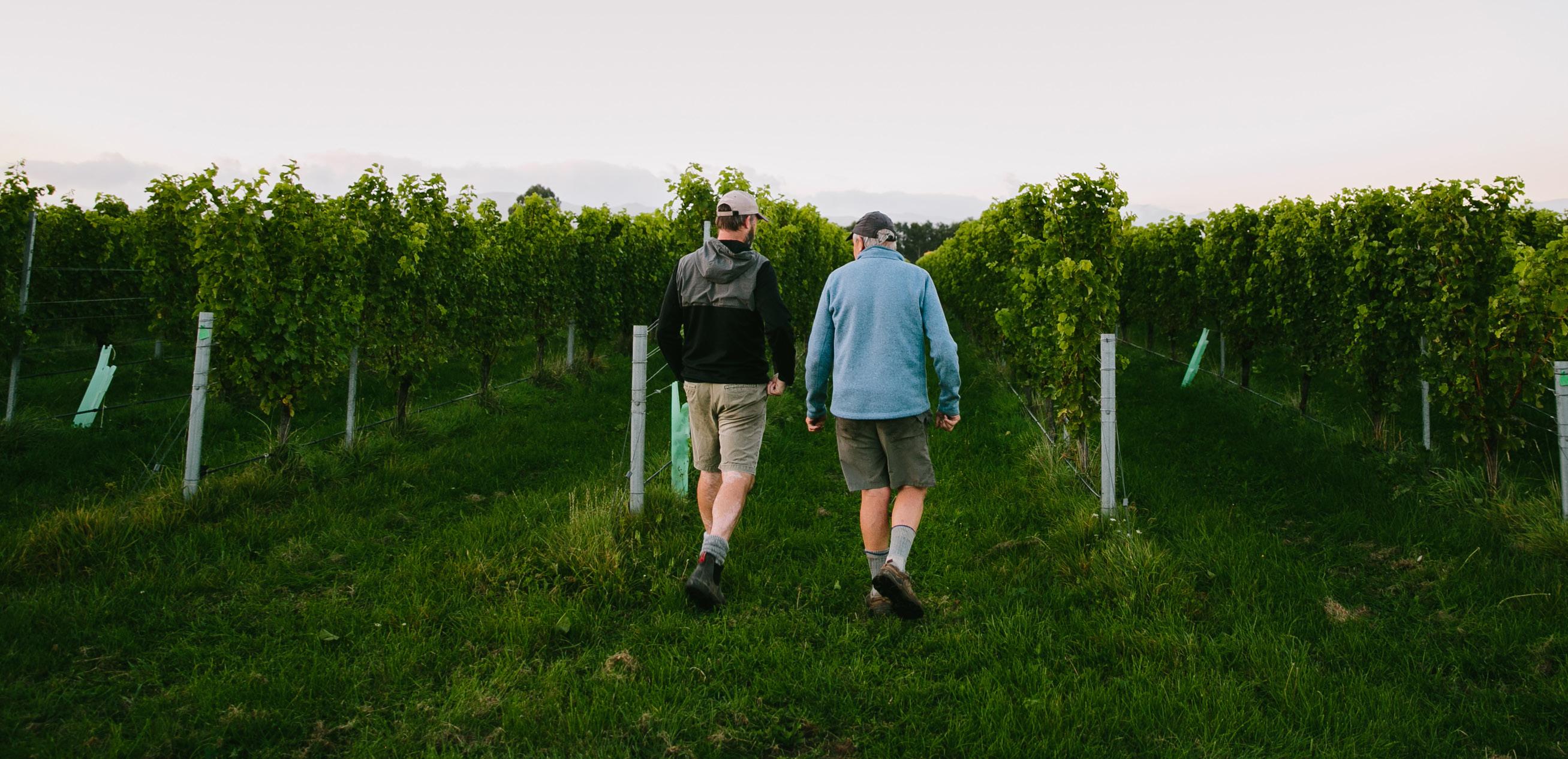
Two

After 14 years, the RSE worker training programme provided by Fruition Horticulture has come to an end
VAKAMEASINA TRAINING courses for Marlborough RSE workers have been tapering off and have now stopped completely after a Government decision to change providers.
Starting with a pilot project in 2009, Fruition Horticulture developed and ran Vakameasina, an education and development programme funded by the Ministry of Foreign Affairs and Trade as NZ aid to the Pacific. Vakameasina, which translates as “treasures we carry together”, teaches skills ranging from cooking and budgeting to plumbing and house-building. Taking part is voluntary and free for Pacific RSE workers. The Government has committed $10.7 million to the RSE Worker Training Programme over the next five years but as this magazine went to press it wasn’t known when the courses will start again. “[We] can’t comment on timelines while the procurement process for the new provider is underway,” says a spokesperson for MFAT. Fruition Horticulture told RSE employers last month that its bid for the contract was unsuccessful. “Vakameasina is a programme that has been such a big part of our lives for the past 14 years,” says managing director Sandy Scarrow. “We are so sad but mostly proud of what we’ve achieved. It’s been everyone’s collective effort that has made this programme such a success.” All workers start with the Essential Learning course covering
health, money management, digital skills and human rights, before choosing further practical training. In Marlborough 2,900 RSE workers took part in Vakameasina courses between 2011 and 2024. The skills they learnt here went back with them to Vanuatu, Fiji, Kiribati, Papua New Guinea, Samoa, the Solomon Islands, Tonga and Tuvalu.
“I’m gutted that Fruition Horticulture aren’t carrying on,” says Tahu Huntley, workforce planning and partnership manager for Hortus. “They were always open to adapting and changing to suit the learners’ needs, finding the right tutor to teach the course, and working hard to innovate new subjects.” A popular course is building a composting toilet. Tahu says that started after Fruition Horticulture visited the Islands to see what impact Vakameasina was having and what other opportunities could be looked at. “Another initiative was to teach bricklaying to help rebuild after cyclones. So not only were the workers heading home with enough money to build a more solid house, they also had the skills to build it.”
Tahu is keen to see the new RSE training programme up and running in time for the arrival of the summer crews from October. “There’s been a tapering off of courses. We had more students wanting to learn but the classes never started for winter. We’re in a lull and it’s a lost opportunity for the workers while it’s being sorted out.”
As well as teaching practical skills, the courses build confidence. “We put forward people who we see have potential, but they may be a little bit softly spoken,” says Tahu. They do the leadership course and by their second
or third season they’re our best supervisors. Without that course they would’ve maybe just sat in the background, and not had the same career progression.”
Jemma McMillan, office administrator at Alapa Viticultural Services, says at first a lot of workers are apprehensive about taking a class but that soon subsides once they see there is so much to learn and benefit from. “Our Samoan and Papua New Guinea groups had a really good time on the course and formed great relationships with their tutors. Vakameasina has been a real asset to our RSE community,”she says. Anne Barrer is a tutor and former regional co-ordinator for the programme. She was there at the start and has seen the scheme grow from one or two tutors to up to 10 part-time tutors and classes at RSE accommodation, churches, community halls and rugby clubs. Back in 2011 Anne was writing course materials as she went, with the class using paper handouts and worksheets. Fast-forward to 2024 and there are fully developed workbooks for all the courses, including QR codes for further information online. The guys come to New Zealand with the sole purpose of working on a vineyard and then they discover this added benefit of free education,” says Anne.
“It’s learner-centred – we listen to what they want to know, what’s relevant to them, and they’re hugely grateful and appreciative of their new skills. The graduation ceremonies still bring tears to my eyes, they’re so celebratory and the singing is amazing. We also invite people from the community including the Mayor. I think it’s important that RSE workers see that while they’re

“We had more students wanting to learn but the classes never started for winter.” Tahu Huntley
in Marlborough they’re part of this community and we appreciate them and what they contribute.”
This sentiment is echoed by Marcus Pickens, general manager at Wine Marlborough and a regular attendee at graduations. “It’s a reciprocal relationship – the RSE workers are vital here, and this programme is a way for them to take skills and improve their lives back home.”

For strong vines, consistent yields and better tasting wines*apply:
*Asusedin2021AccoladeWinestrial for provenyieldincreaseandbettertastingwine. Mycorrcin – to boost soil microbes that increase root growth and nutrient uptake Digester – to stimulate decomposition microbes to recycle organic matter fast Foliacin – to improve foliar health and resilience in times of environmental stress


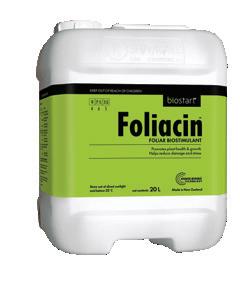

OF:
n Vineyard posts & strainers
n Quality timber products
n Utility buildings - designed for your needs
n Locally owned
n Working towards the betterment of Marlborough
163 Hammerichs Road, Blenheim Ph 03 578 0221 Fax 03 578 0251 sales@rapauratimber.co.nz

Let us take care of all your controlled Temperature storage requirements:
◆ Custom controlled area
◆ Approved Transitional Facility for unloading of Imported Containers
◆ Over 60,000 cubic metres of storage spread over two sites.
◆ Chilled storage available during vintage for handpicked grapes.
◆ Sophisticated monitoring equipment ensures your product is kept at the optimum temperature.
◆ We could lease you a small room for your exclusive use to suit your particular temperature requirements (0 o C to + 30 o C).
◆ We store bottled wine, barrels of wine and new plants awaiting the opportune time to plant.
◆ Individual rooms available to grow new budwood. Old Renwick Road, Blenheim Tel: 03 578 2648 Fax: 03 578 2546 www.provincialcoldstores.co.nz
Road, Spring Creek. Tel: 03 570 5944 Fax: 03 570 5955



Warm and Chilled Glycol Systems Design & Build Mechanical Services
Heat Recovery Systems
S/S Wine and Juice Lines
Water Treatment and Filtration
“Over 15 years experience serving the Marlborough wine industry ”
The Marlborough Environment Awards aim to spread knowledge and inspire
ENTRIES FOR the 2025 Marlborough Environment Awards open in September and two previous winners of the Wine Industry Award share their experiences of entering, the judging and what happened next.
Belinda Jackson, group marketing manager, Lawson’s Dry Hills. Winner of the 2021 Award for their commitment to Sustainability and Carbon Neutral ISO accreditation and leading the way in recyclable packaging, solar power and water conservation.
“Compared to other sustainability awards we’ve entered this was a relatively easy process, with a simple online form. Winning the award was a lovely endorsement for what we’ve been doing since the 1990s and it was important to us because it was local recognition from our peers. We want to inspire others to be sustainable, so having lots of people coming along to the field day and hearing our story fits well with our own philosophy of sharing. And it’s a really nice feeling to get an award. We’re a pretty humble bunch here, not all glitzy and glam, and it was nice that people looked at us and wanted to find out more about the work we’re doing.
Dansy Coppell, general manager of Repost Winner of the 2023 Award for their process to recycle broken treated grape posts into farm fencing, solving a serious waste disposal issue for winegrowers.
“Entering the awards was a big moment for us. Up until then we’d just been keeping our head down trying to develop the business. We knew we were on to something but were feeling worn out and we needed to take stock. The environment awards came at a time when we needed fresh eyes and feedback, and that’s what the judges gave us. They came on site, were kind and considerate and put us at ease — it was more mentoring than judging. Their written report was like gold – customised to our business and giving us contacts that moved us on to the next stage. And then came the field day, which exposed us to a new people and networking opportunities. We also caught up with vineyard managers who we’d been talking to previously but hearing our full story at the field day got them across the line. We’ve gone on to win other awards, but this was our first one and it was the catalyst for our growth.”

“It was important to us because it was local recognition.”
Belinda Jackson
Wine Marlborough is a long-term sponsor of the Wine Industry category and advocacy manager Ruth Berry is keen to see companies and individuals enter: “The Awards are a fantastic way to share with the wider community what is happening in the industry to look after the environment and reduce our carbon footprint. Judges are interested in what you’re doing and why. You don’t have to enter a completed project – your entry can be a work in progress; and it can be all or part of your operation.”
Wine entries fall into one of the following Award categories:
• Wine Industry — aimed at vineyards, wineries and companies servicing the industry. Previous entries include wastewater treatment, irrigation management, power-saving in the winery, and research into brown beetle control
• Landscape and Habitat — aimed at vineyards and wineries involved in planting and restoration projects. Previous entries include native and riparian plantings, weed control and wetland restoration.
• Electrification and Energy Efficiency (new category this year, sponsored by Marlborough Lines) — examples of reducing reliance on fossil fuels, promote generation of renewable electricity and energy efficient buildings.
More information and to enter online: cmea.org.nz
The others just don’t cut it!
New Katana® takes out weeds including resistant ryegrass for longer
Glyphosate resistant ryegrass has met its match. Katana, the new residual herbicide, provides weed control for up to 5 months. With Katana you’re sorted.


Talk to your local merchant to find out more.

KAT PICKFORD
AFTER “FALLING” into the wine industry as a human resources intern for Indevin in late 2020, Angus McFarlane has progressed quickly within the company, thriving on the challenge that each new role has presented.
As a former professional rower with the goal of representing New Zealand at the Olympics, Angus, who grew up in Marlborough, learned a lot about the focus and diligence required to succeed at a high level. But after five years of intensive training and progressing through the Rowing New Zealand U21s, U23s, and elite teams, including weeks of solo training on a rowing machine during Covid lockdowns, Angus decided he’d had enough of rowing and started looking for other opportunities.
He had left Marlborough Boys’ College with no idea about a career and dabbled in studying finance and management while training with Rowing New Zealand in Cambridge. When an opportunity came up in his hometown with Indevin, Angus decided to give it a shot. It wasn’t long before he progressed to the position of dry goods co-ordinator in Marlborough, responsible for planning, production and procurement. After 18 months he was shoulder-tapped to move to Auckland, where he managed the Villa Maria finished goods warehouse for 13 months, before progressing to logistics and customer operations manager of the wider Indevin Group.

“I realised sustainability spans across the entire business and is critical to our success.”
Angus McFarlane
to transport and logistics, distribution, right through to marketing, with the strategic objective of planning, coordinating and implementing sustainable business practices across the entire value chain.”
“Initially I’d thought why on earth would I want to move to Auckland?” Angus says. “I love Marlborough – the boating, the fishing, the short commute – it’s the best place in the world. But I’m glad I did, because that was where I cut my teeth in management. I really flourished with the bigger roles and a change of scenery.”
He was just settling in when another opportunity arose – the position of sustainability manager for Indevin. “I try not to dwell on things for too long, so I thought about it overnight, and while at first I had thought it was a bit of a specialist role, after doing my research I realised sustainability actually spans across the entire business and is critical to the success of the company going forward,” he says. “Nine months in and I’m loving it. I work within every facet of the business from the vineyards, to production,
As New Zealand’s largest wine producer, Indevin has a responsibility to be an industry leader in sustainability. “For Indevin, sustainability is about giving back more than we take,” he says. “It’s not just about planting more trees, it’s about giving back to our people, our community, and our customers, protecting and enhancing our natural resources, and just doing the right thing.” Through his management roles, Angus feels as though he’s found his calling and has ambitions to one day be CEO of a large New Zealand export company – not so surprising considering his father, Duncan McFarlane, was the founder and CEO of Indevin from 20032024.
And as for his dreams of going to the Olympics? He gets to fulfill that goal this month, supporting his partner Jackie Gowler in her quest for gold when she rows in the New Zealand Women’s Coxless Four at the Paris Olympics.

FEATURES:
Gear driven rotary orchard mower
No daily maintenance
Robust, durable design
Designed and manufactured in New Zealand Scan




of the Marlborough Winegrowers Board share their thoughts
TRACY JOHNSTON, grape grower representative and owner of Dayvinleigh vineyard
We’ve been looking at ways we can use new technology in the vineyard to help save time and money. We recently spent time at WinePRO and think we’ve found a new solution to keeping the birds away. So this year we’ll be bravely forgoing nets for an autonomous bird scarer. This self navigating buggie drives around the vineyard, waving a flag, playing music, and generally making a nuisance of itself, so theoretically the birds don’t want to land and feast on the grapes.
We grow Pinot Noir for rosé, and we’ve buddied up with one of our neighbours who has a Sauvignon Blanc vineyard. The idea is we harvest early before the pressure comes on the Sauvignon - so we reckon we’ll need it for about six weeks and then it’ll go over to the neighbours. This means we’re trying it out on two varietals and sharing the cost of the lease of the bird scarer.
It also means no more putting the nets out, clipping them up and then racing to bring them in ahead of the harvester. So if all that theory works we will have found a way to save time and money while not compromising the quality of the fruit. We’re really excited to be trialling it this season.

“If all that theory works we will have found a way to save time and money.”
Tracy Johnston
The Marlborough Winegrowers Board represents the grape growers and wine companies of the region and sets the strategic direction for Wine Marlborough. The board is made up of five wine company and five grape grower representatives who are elected for a three-year term. Elections are held annually and nominations open this month for four wine company and two grape grower positions. The board meets at least six times a year and strives to have a range of skills and diversity of views around the table to ensure the industry is well represented. Being on the board is a good opportunity to step outside your day-to-day work and gain a greater understanding of the industry, collaborate with others to contribute to the region, and gain experience in governance and leadership. For election information contact Marcus Pickens, Wine Marlborough general manager marcus@winemarlborough.nz Ph 021 831 820
2024 election timetable
August 15 Members receive voting information
September 6 Candidate nominations close September 13 Ballot papers sent to voters September 30 Ballot papers returned October 1 Election results notified November 1 First meeting of new Board


Pilot programme offers winegrowers free software to help respond to biosecurity incursions
JIM HERDMAN
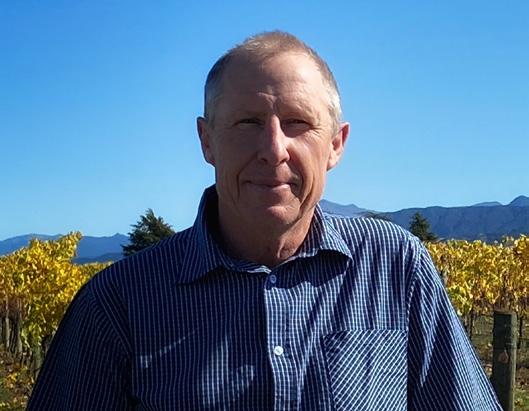
NEW ZEALAND Winegrowers (NZW) are working with software company Onside to pilot a solution to improve the industry’s preparedness and ability to respond to a biosecurity incursion. The project aims to enhance traceability and boost the capacity to respond. During the pilot, growers download and use Onside’s app to collect and store information about the movement of plant material, equipment and machinery on and off their vineyard.
The insights from this data can be used to better model, track and predict pest and disease spread. The pilot will help identify the best surveillance and intervention measures to efficiently manage endemic pests such as weevils and Chilean needle grass, as well as prepare for the containment and eradication of foreign incursions such as Xylella or brown marmorated stink bug, should they arrive in New Zealand. The pilot has been running for almost two years and its original target was to sign up a quarter of the country’s vineyards to get meaningful industry data. This target has nearly been met, making now an ideal time to improve your vineyard’s biosecurity by implementing the Onside Intelligence traceability system, which is available free to all NZW members.
Ben Brown, general manager for Onside Intelligence, explains Onside’s journey so far in the primary sector, what their technology does and how it is being used to improve biosecurity. Core business and steps into biosecurity management “Onside was built to make life easier for growers and farmers. Ten years ago we realised technology
could play a significant role in simplifying risk management and compliance, so we started with digital property maps and a simple check-in solution to make sure visitors were made aware of property risks and hazards in real-time. As more properties started to use Onside, we realised we were helping producers keep up-to-date records about the movement of equipment, machinery, plant material and animals. Analysing these records could help predict how diseases might spread through the industry, and that led
“Simulations show Onside Intelligence can reduce biosecurity response costs by up to 75%.” Ben Brown
to establishing our biosecurity offering which we now call Onside Intelligence.”
Who else is using Onside Intelligence?
“Onside Intelligence has been deployed in the kiwifruit and viticulture industries and is being piloted for aquaculture, pork, pipfruit and avocado growers. The Onside app is also widely used with dairy, poultry, sheep and beef farming. The most important element in successfully deploying this technology is to make sure producers see benefits beyond






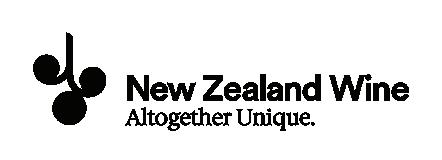

the biosecurity outcomes. We saw with Covid apps that people stop using them as soon as the threat has gone, so we aim to avoid that behaviour by making sure biosecurity isn’t the only benefit. We’re fortunate that many producers use our core app to manage their risk and Person Conducting a Business or Undertaking (PCBU) requirements or to meet accreditation standards, and this means we maintain a live dataset that can be analysed to support preparedness for biosecurity incursions. We launched in Australia three years ago and are seeing great momentum in our growth in the market, mainly due to heightened awareness about the importance of accurate visitor records to protect producers from biosecurity threats like avian influenza.”
How does Onside Intelligence improve industry biosecurity?
“Whenever you replace pen and paper with technology, you generally get a very strong return. What we do with Onside Intelligence is help industries and the government prepare better for biosecurity incursions and respond much faster when they occur. This is because digital records of movements on and off properties are up to date and readily available, which replaces countless hours of phone calls and trawling through paper records. When we’ve run industry simulations in NZ and Australia, we’ve demonstrated that Onside Intelligence can reduce biosecurity response costs by up to 75%.”
What outcomes and tools does Onside provide to NZW members?
“The most important outcome is an up-to-date record of every movement on and off a winegrower’s property. This can help with SWNZ but, more importantly, it gives NZW the ability to analyse an anonymous view of movement data to understand pest pathways and put in place the necessary protections. The added benefit for winegrowers is access to Onside’s suite of digital health and safety, risk management, and compliance tools. Onside also ensures the reliability and accuracy of NZW’s traceability system because the dataset is constantly updated. More than 420 vineyard properties are mapped in Onside and share movement data, and we record close to 4,500 movements every month, with new data collected every few seconds. We store this data securely, and winegrowers consent to sharing an anonymised data-set with NZW, which gives them a realtime view of the industry for traceability purposes.”
NZW members can join the Onside biosecurity pilot for free. Add-ons for health and safety require a subscription fee. Contact ben.brown@onside.co.nz
For any questions or assistance with vineyard biosecurity contact the biosecurity team on biosecurity@nzwine.com. And if you notice anything unusual, please Catch It, Snap It and Report It to the Biosecurity NZ hotline 0800 80 99 66.

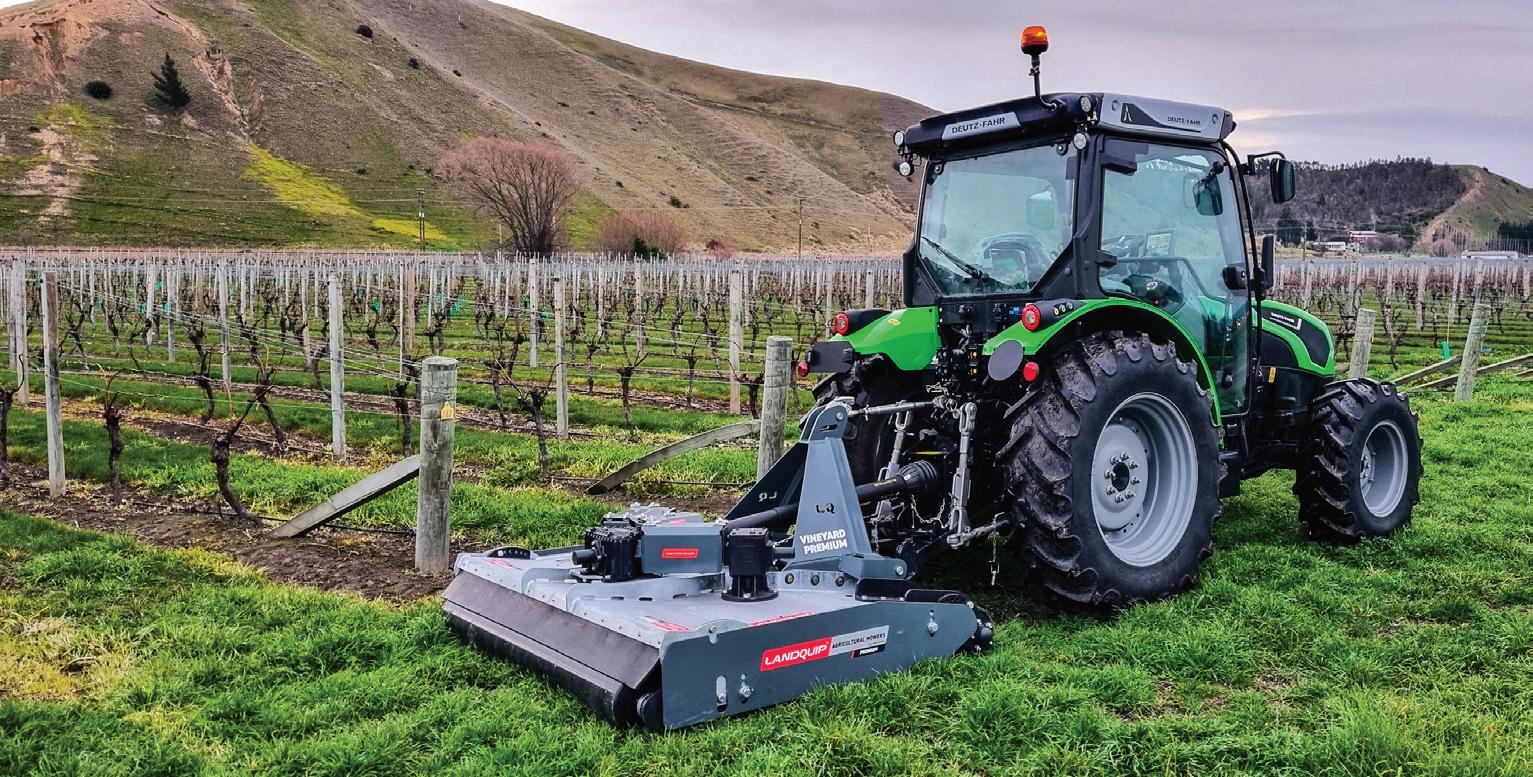

























AFTER THE outstanding 2024 harvest, all eyes (and mouths) are on the new releases coming up for judging at the Marlborough Wine Show. Entries opened on August 8 and chief judge Stu Marfell will be leading the panels assessing all the classes.
It will be the second year of awarding trophies to wines that promote the sub regionality of Marlborough. James Macdonald, chair of the show’s steering group and senior winemaker at Hunter’s, says it attracts a lot of wines that wouldn’t normally be entered in other shows. “This is a bit different because it’s a regional show – you’re really benchmarking gainst your peers,” he says. “Most people when they think of Marlborough think of it only as one big region. But living here, we know it’s more complex and we’re proudly one of the few shows celebrating the nuances of the sub-regions.” With this year’s quality harvest, James expects stiff competition and says that’s only a good thing for Marlborough. There is a rigorous judging process, with wines tasted up to five times before being awarded the wine of the show. “The Sauvignon Blanc trophy, won by Wairau

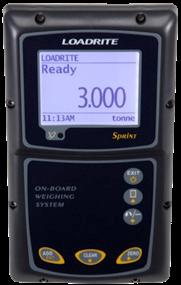

River last year, is the one we all want to win. There are so many entries in that class so to be judged the best you really do have to be putting out a very good wine.”
He says another highlight of the show is the massive exchange of knowledge. “There’s really good comaraderie among winemakers, we all share information and if everyone is improving that’s great because a rising tide lifts all boats.”
The show, sponsored by QuayConnect, is owned and run by Wine Marlborough. marlboroughwineshow.com
Entries Open: August 8
Entries Close: September 4
Samples due: September 20
Judging: October 2-4
Medal winners notified: October 9
Long lunch and trophies: October 18
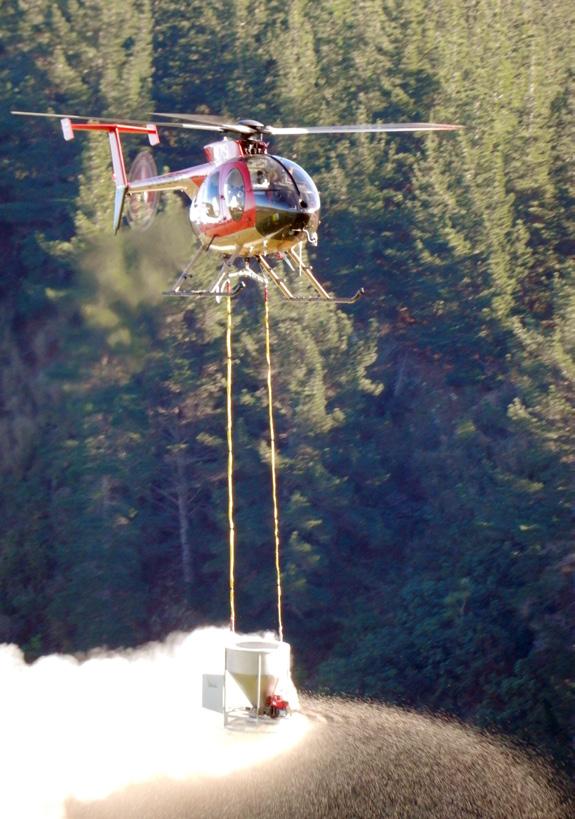



Ricard sells off wine
French company Pernod Ricard has announced the sale of its New Zealand wine brands as part of a global move to focus on spirits and Champagne. Brancott Estate, Stoneleigh and Church Road along with Pernod Ricard’s labels in Australia and Spain have been sold to Australian Wine Holdco Ltd (AWL), a consortium of international institutional investors and owner of Accolade Wines. Pernod Ricard says “the transaction is the result of a continuous assessment of its strategic opportunities to deliver sustainable value for its shareholders, employees, clients and partners”. AWL spokesman Joshua Hart says the deal will create a more certain and financially sustainable future for the business as it adapts to changing consumer tastes and other industry challenges. The sale price has not been disclosed and the deal is still subject to regulatory approvals.

Food and fibre investment company Craigmore
Sustainables is partnering with Babich Wines to develop a new 200ha vineyard on farmland on the North Bank of the Wairau River. Craigmore was granted approval by the Overseas Investment Office to buy the 418ha sheep and beef property in 2022. The company’s general manager horticulture Con Williams says the move to Marlborough provides diversification for the business and an initial footprint into the region that can be expanded in the future. The Babich Marlborough team will develop and manage the vineyard, to be known as Cat Creek, and will increase processing capacity at its winery for the additional grapes. Craigmore manages more than 26,000ha of dairy, grazing, forestry and horticultural properties throughout New Zealand. Cat Creek is its first viticulture venture in Marlborough and it expects to harvest about 3,000 tonnes of Sauvignon Blanc from the vineyard.

The Eiffel Tower, Statue of Liberty, Sydney Harbour Bridge – these are the places you expect to see in the top 10% of tourist attractions around the world. Now you can add the cellar door at Framingham Wines in Renwick. Tripadvisor has named Framingham a winner in its 2024 Travellers’ Choice Best of the Best Awards. The winners are based on first-hand reviews left on the travel guide platform over the past 12 months. A welcoming courtyard, live music events and a range of wines “made by our own rules”, are all part of the experience, says Framingham’s Customer Experience Manager Catherine Bygate. “It was so unexpected to think that we could be keeping up with the world’s major attractions. And it just goes to show –Marlborough wine and our attractions continue to hugely impress on a global scale”.


Marlborough Roads JV, a joint venture between HEB, Fulton Hogan, Marlborough District Council and NZTA Waka Kotahi, won the Collaboration Award at the NZ Workplace Health and Safety Awards last month for their work to improve safety during the grape harvest. The award recognises MRJV’s management of roadworks at harvest time and their goal of reducing grape spillages. The number of reported grape spills more than halved from 50 in 2023 down to 22 this year. Marlborough Roads Manager Steve Murrin said the award comes after four years of collaboration with industry groups including Wine Marlborough, Ia Ara Aotearoa – Transporting New Zealand, and New Zealand Wine. “Our approach to working together includes forums before and after harvest, a live GIS system of road works and spill events accessed by QR code, and operational improvements by all of the collaborating organisations,” Steve says.
A Lunch and Learn seminar on August 19 features Vinecology - how to balance habitat, biodiversity and pest control in the vineyard. NZ Landcare Trust and Dr Sarah Kross from Canterbury University have teamed up to provide greater insight into the benefits and challenges of using native plantings in our productive landscape. Dr Kross has extensive experience in researching the interactions between wildlife and people, especially in human-dominated systems such as farms and vineyards. NZ Landcare Trust supports the new Wairau ecological corridor project, which aims to work with land managers to connect biodiversity across the catchment.
Vinecology Lunch and Learn Seminar, Monday 19 August, 12-2pm at the Marlborough Research Centre. Lunch provided. Registrations essential:wendy.sullivan@landcare.org.nz

Galileo CLOUD
The most advanced Cloud-based controller for viticultural irrigation & fertigation


Arkal Spin Klin Nova Plus
Exceptional Performance. Modularity at its Best.


GSI Pro Fertijet Injector
Web-based control of irrigation, filter flushing and multichannel fertigation


D5000 AS CX Dripline
A long-term, safe and non-leaching solution to reduce root intrusion

A monthly list of events within the New Zealand wine industry.
To have your event included in the September 2024 Wine Happenings, please email details to editor@winemarlborough.nz by August 20. For more information, go to the website supplied or email sarah@winemarlborough.nz
AUGUST
8 Marlborough Wine Show entries open (marlboroughwineshow.com)
13 MSD Job Expo for Food and Wine Production (myjobsearch_blenheim@workandincome.govt.nz)
14 Women in Wine Alternative Varieties Tasting, 5.30pm, Small Town Winery
18 Pinot Noir Day Wine Show (fidelio.co.nz)
19 Vinecology seminar, Marlborough Research Centre. Registrations: wendy.sullivan@landcare.org.nz
22 Legacy Reds by Candlelight at Forrest Wines
27 Young Winemaker of the Year National Final 2024 (nzwine.com/en/events)
28 Young Viticulturist of the Year National Final 2024 (nzwine.com/en/events)
29 Climate Action Marlborough (events.humanitix.com/climate-action-marlborough-carbon-energy-waste-and-innovation)
29-30 New Zealand Wine, Altogether Unique 2024 (nzwine.com/en/initiativesevents/altogether-unique-2024)
SEPTEMBER
1 Forrest Cosy Sunday Sessions (forrest.co.nz/blogs/events/cosy-sunday-sessions)
4 Marlborough Wine Show entries close (marlboroughwineshow.com)
4 Wine Options, Fidelio Wine Bar (trybooking.com/nz/events/landing/12793)
17 Organic Wine Week Down to Earth, Wellington (organicwinenz.com)
26-27 Aotearoa Chardonnay Symposium, Hastings (hawkesbaywine.co.nz)
30 NZ Wine Centre, Research Snapshots (marlboroughwinenz.com/industry-events) OCTOBER
1 South Marlborough New Release Wine Show (fidelio.co.nz)
9 Marlborough Wine Show Results (marlboroughwineshow.com)
15 ‘Keeping It Fresh’ Technical Workshop (nzsvo.org.nz/technical-workshops/fresh)
18 Marlborough Wine Show long lunch celebration and trophies (marlboroughwineshow.com)


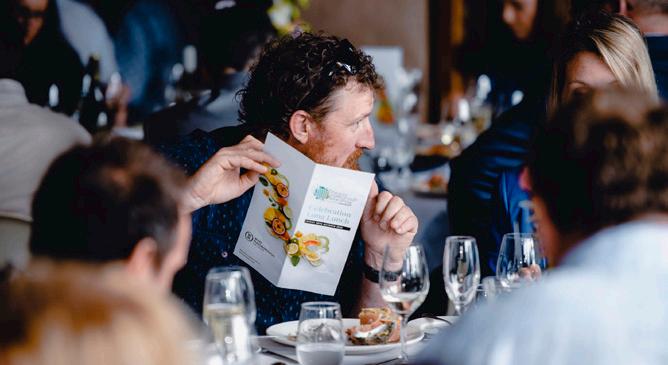













Maximise crop production with effective spray applications

Actiwett® enhances the wetting, spreading, and sticking properties of horticultural crop protection chemicals, reducing surface tension and increasing spray coverage.
Talk to your local Fruitfed Supplies team for more information on using Actiwett®
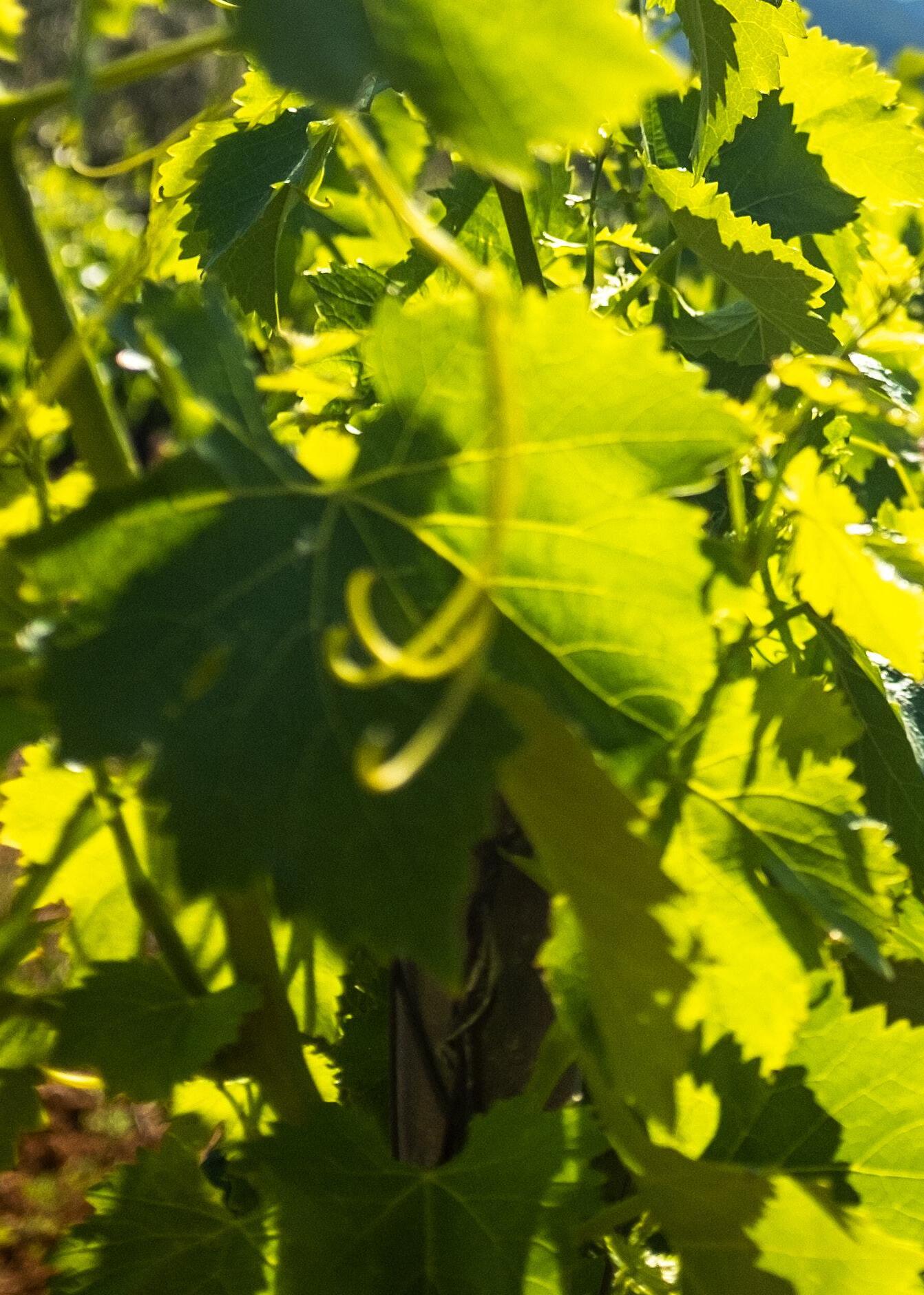
www.fruitfedsupplies.co.nz